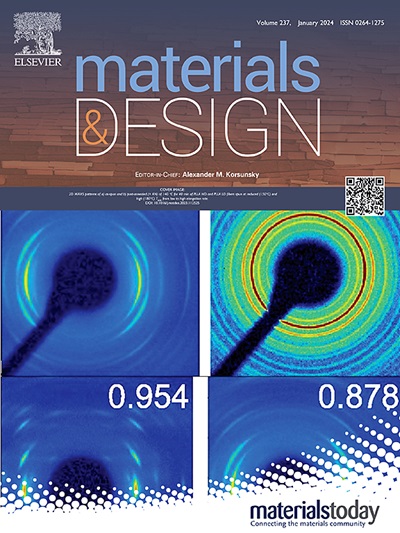Multi-scale friction model for automotive brake system incorporating tribological effects of surface asperities
IF 7.6
2区 材料科学
Q1 MATERIALS SCIENCE, MULTIDISCIPLINARY
引用次数: 0
Abstract
This paper presents a novel multi-scale friction model designed to capture the friction behavior of brake pads by integrating material deformation at different scales. Inspired by previous multi-scale models for the boundary lubrication regime, this model incorporates key features that account for the unique material properties and surface topography of brake pads. A height distribution function derived from surface topology, a contact model representing asperity deformation, and a plowing model addressing the tribological effects of disc asperities form the core framework of the approach. The model primarily focuses on overall material behavior and micromechanical deformation within the brake system while maintaining computational efficiency, providing a mechanics-based, multi-scale representation suitable for large-scale simulations in consideration of pressure, temperature, and topological parameters. To ensure computational efficiency, the model is implemented through a structured approach optimized for finite element (FE) analysis, where it is transformed into an approximate function and embedded in FE subroutines. Its effectiveness is validated through FE simulations of reduced-scale brake dynamometer tests, which demonstrate its predictive capabilities and computational feasibility. The results confirm that the proposed modeling framework accurately predicts the friction coefficient in overall and provides valuable insights into the multi-scale interactions governing friction behavior in brake systems.

考虑表面粗糙度摩擦学效应的汽车制动系统多尺度摩擦模型
本文提出了一种新的多尺度摩擦模型,通过整合材料在不同尺度上的变形来捕捉刹车片的摩擦行为。该模型的灵感来自先前的边界润滑多尺度模型,该模型结合了考虑刹车片独特材料特性和表面形貌的关键特征。基于表面拓扑的高度分布函数、代表粗糙变形的接触模型和解决圆盘粗糙摩擦学效应的犁削模型构成了该方法的核心框架。该模型主要关注制动系统内的整体材料行为和微观力学变形,同时保持计算效率,提供基于力学的多尺度表示,适用于考虑压力、温度和拓扑参数的大规模模拟。为了确保计算效率,该模型通过一种针对有限元分析优化的结构化方法实现,其中将其转换为近似函数并嵌入到有限元子程序中。通过小尺寸制动测功机试验的有限元仿真验证了该方法的有效性,验证了该方法的预测能力和计算可行性。结果证实,所提出的建模框架在总体上准确地预测了摩擦系数,并为控制制动系统摩擦行为的多尺度相互作用提供了有价值的见解。
本文章由计算机程序翻译,如有差异,请以英文原文为准。
求助全文
约1分钟内获得全文
求助全文
来源期刊

Materials & Design
Engineering-Mechanical Engineering
CiteScore
14.30
自引率
7.10%
发文量
1028
审稿时长
85 days
期刊介绍:
Materials and Design is a multi-disciplinary journal that publishes original research reports, review articles, and express communications. The journal focuses on studying the structure and properties of inorganic and organic materials, advancements in synthesis, processing, characterization, and testing, the design of materials and engineering systems, and their applications in technology. It aims to bring together various aspects of materials science, engineering, physics, and chemistry.
The journal explores themes ranging from materials to design and aims to reveal the connections between natural and artificial materials, as well as experiment and modeling. Manuscripts submitted to Materials and Design should contain elements of discovery and surprise, as they often contribute new insights into the architecture and function of matter.
 求助内容:
求助内容: 应助结果提醒方式:
应助结果提醒方式:


